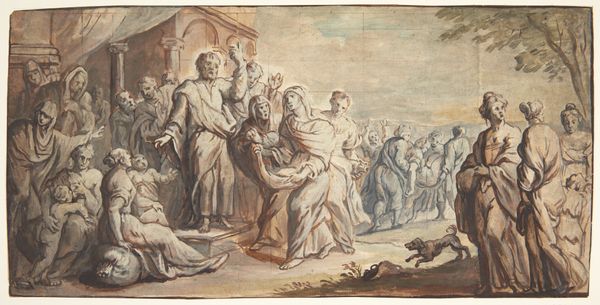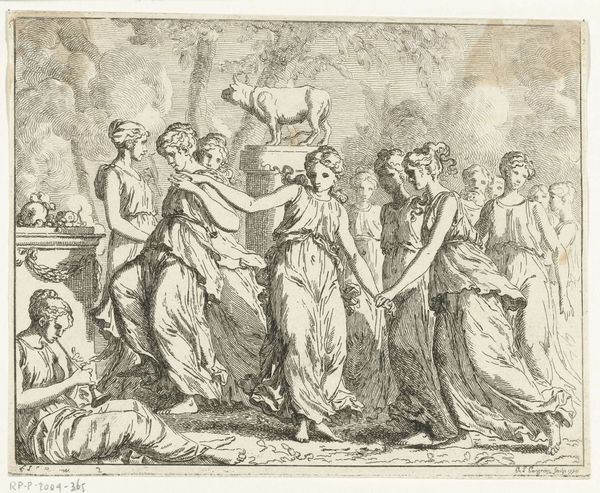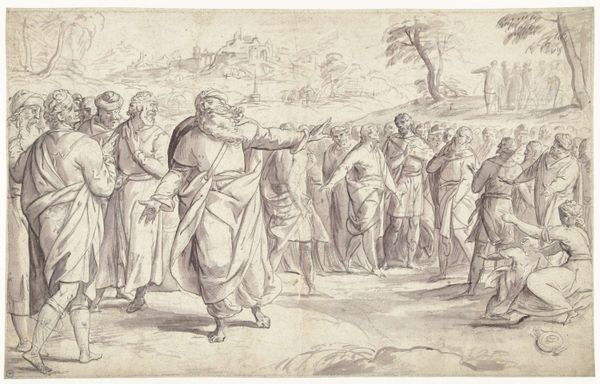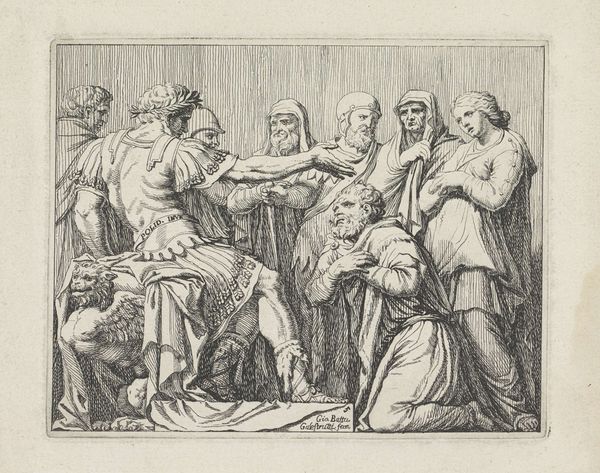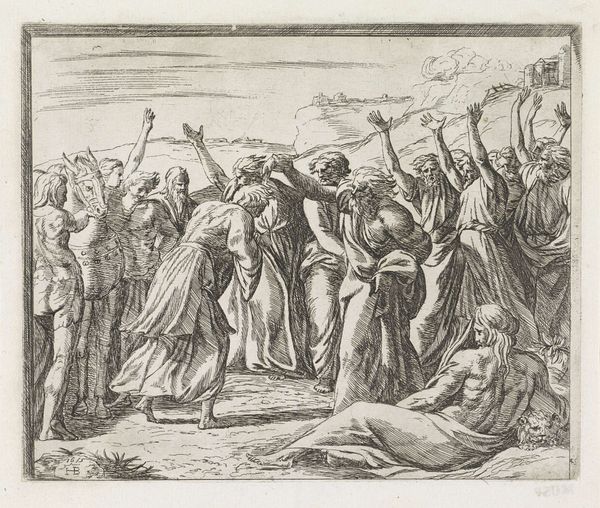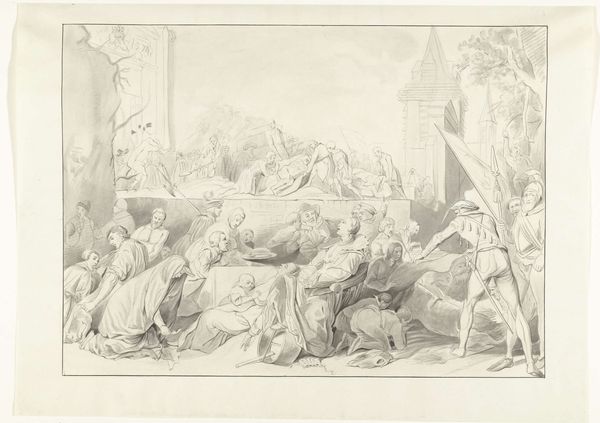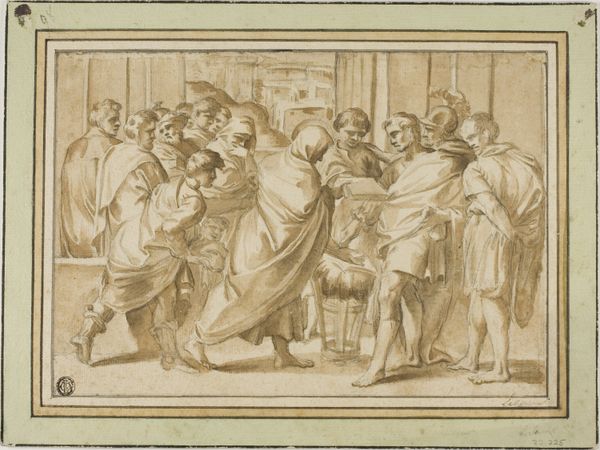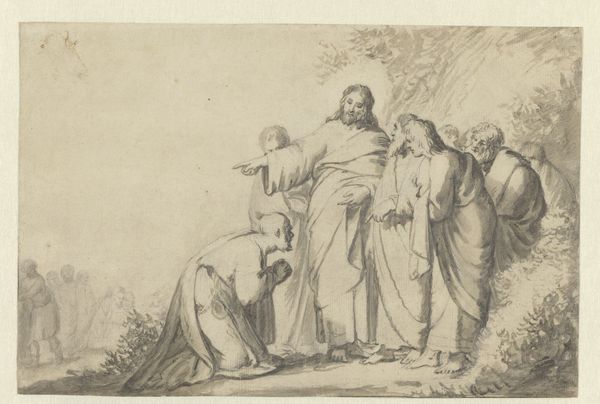
drawing, paper, pencil
#
drawing
#
narrative-art
#
figuration
#
paper
#
pencil
#
line
#
history-painting
#
academic-art
#
realism
Copyright: Public Domain: Artvee
Editor: This is John Singleton Copley’s "Study for 'The Ascension'," created around 1774. It’s a pencil drawing on paper, and I’m struck by how carefully Copley has rendered the figures’ expressions and drapery. It’s also interesting to see the landscape in the background. What do you see in this piece, especially considering its historical context? Curator: The landscape you mentioned offers us a good entry point. Think about the context of eighteenth-century religious art. Was Copley interested in simply illustrating a biblical scene, or could he have been trying to comment on something more? Consider the emerging political discourse around individual liberty at that time. The upward gaze of the figures, the implied transcendence—does it solely point towards religious devotion, or does it, perhaps subtly, reflect the aspirations for social and political ascension that were brewing during the pre-revolutionary period? Editor: That’s a fascinating point. I hadn't considered the parallel between spiritual ascension and social mobility. It makes me think about who Copley was painting for. Was this image, even as a study, meant to resonate with those sentiments? Curator: Precisely. Copley was navigating a complex socio-political landscape himself, caught between his loyalist roots and the burgeoning American desire for independence. Art was often a space where such tensions were negotiated. Who gets to ascend? Who is deemed worthy? It invites reflection on the societal structures that dictate such ascension. Editor: I see what you mean. It challenges the notion of "divine" right and perhaps suggests a more democratized sense of hope. So much more than just a scene from the Bible. Thank you. Curator: My pleasure. Thinking critically about who is included, who is excluded, and whose narratives are prioritized is, to me, where the true value of art historical analysis resides.
Comments
No comments
Be the first to comment and join the conversation on the ultimate creative platform.


